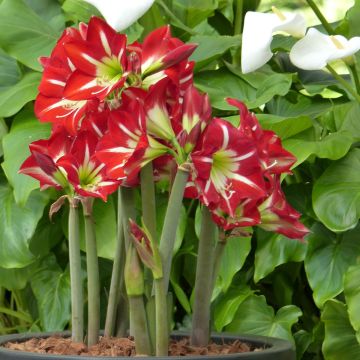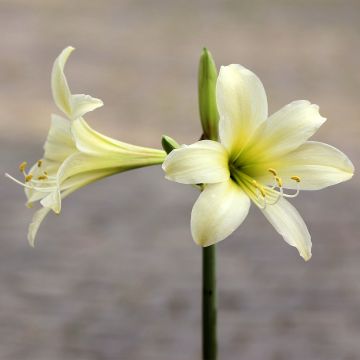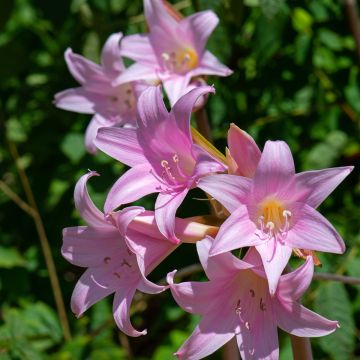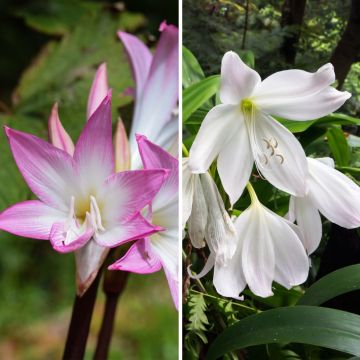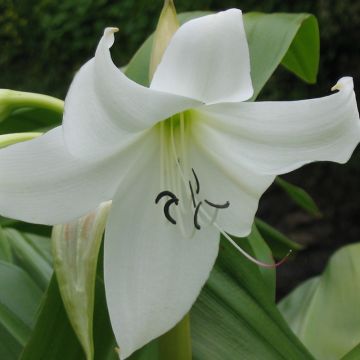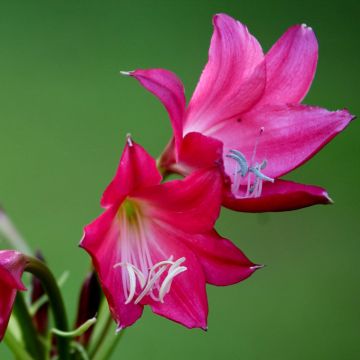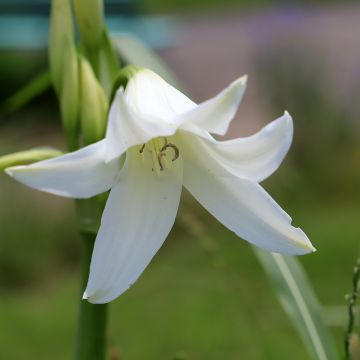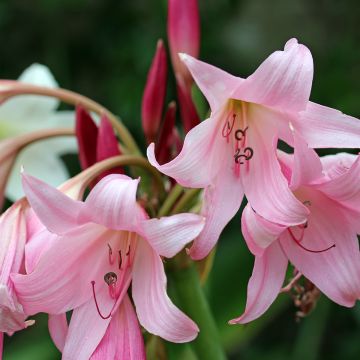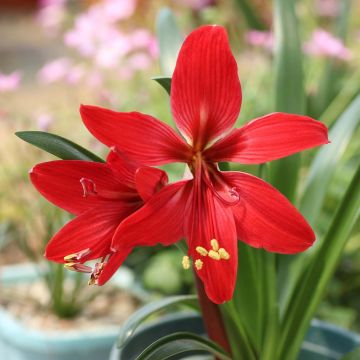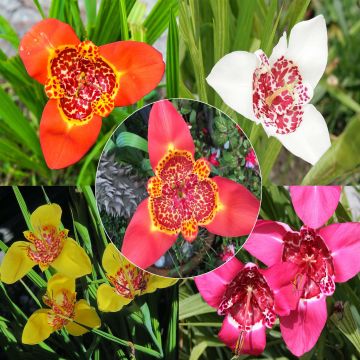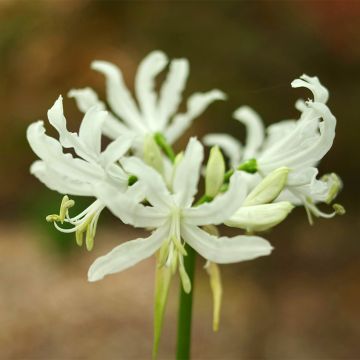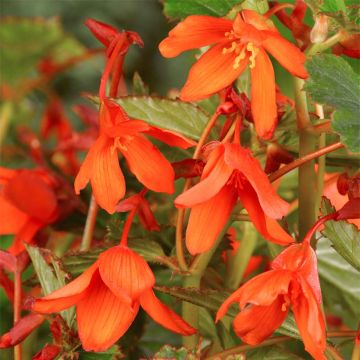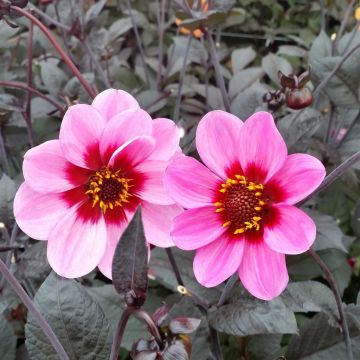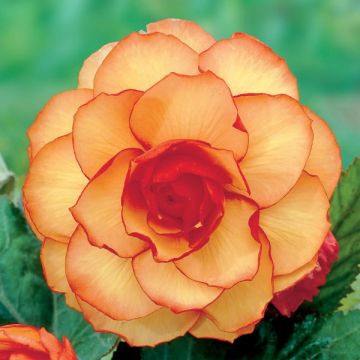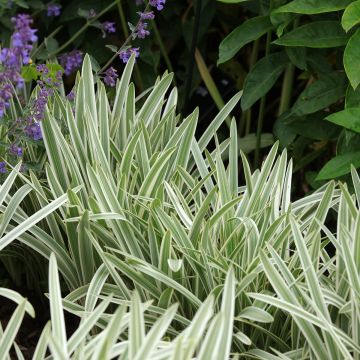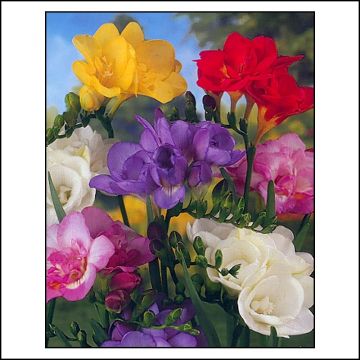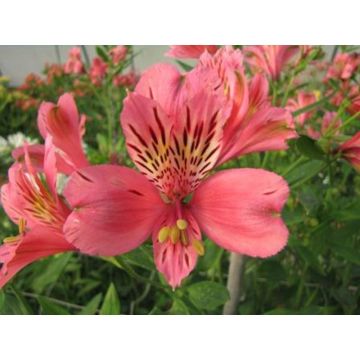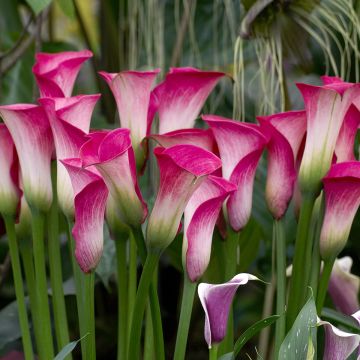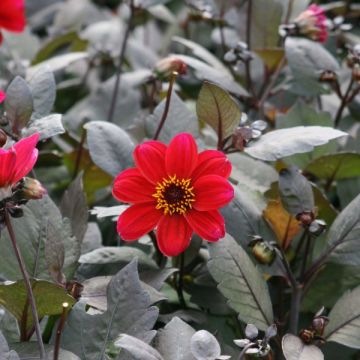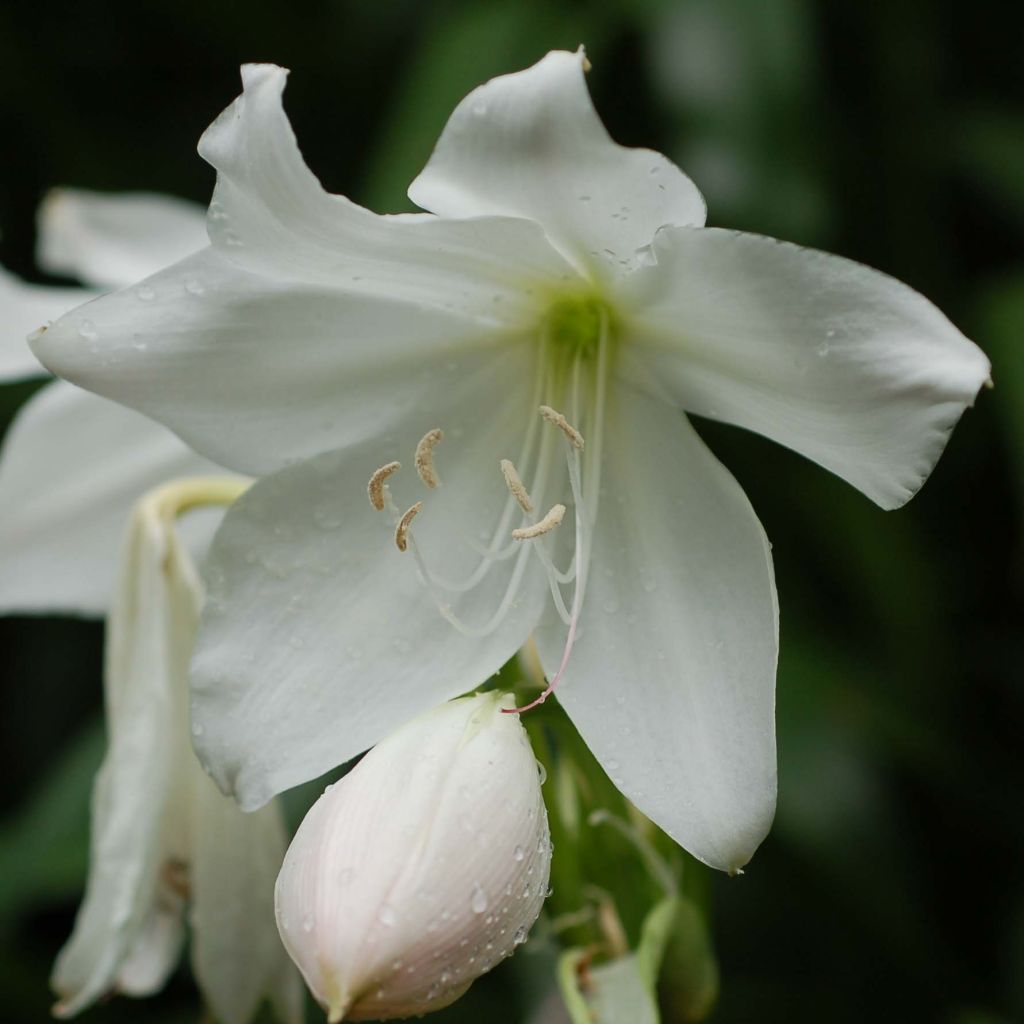

Amaryllis belladonna Alba
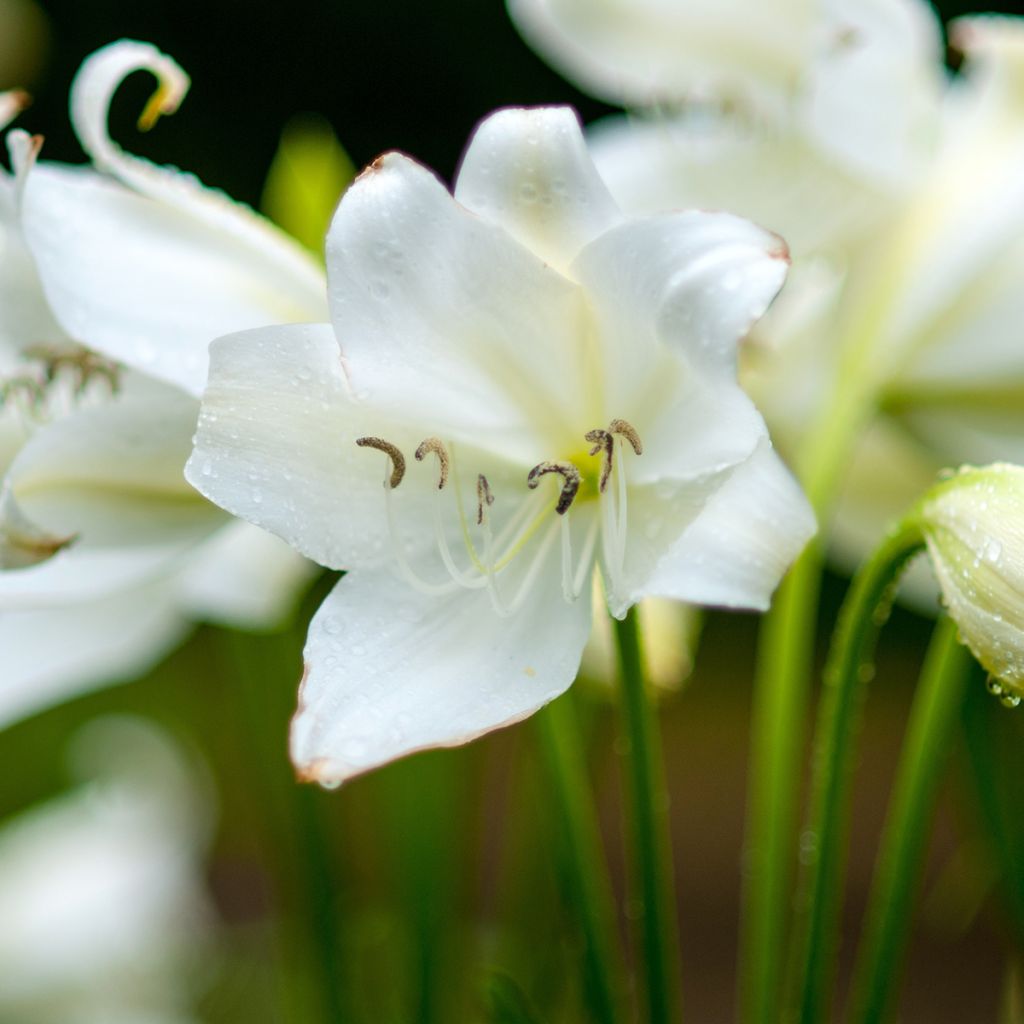

Amaryllis belladonna Alba
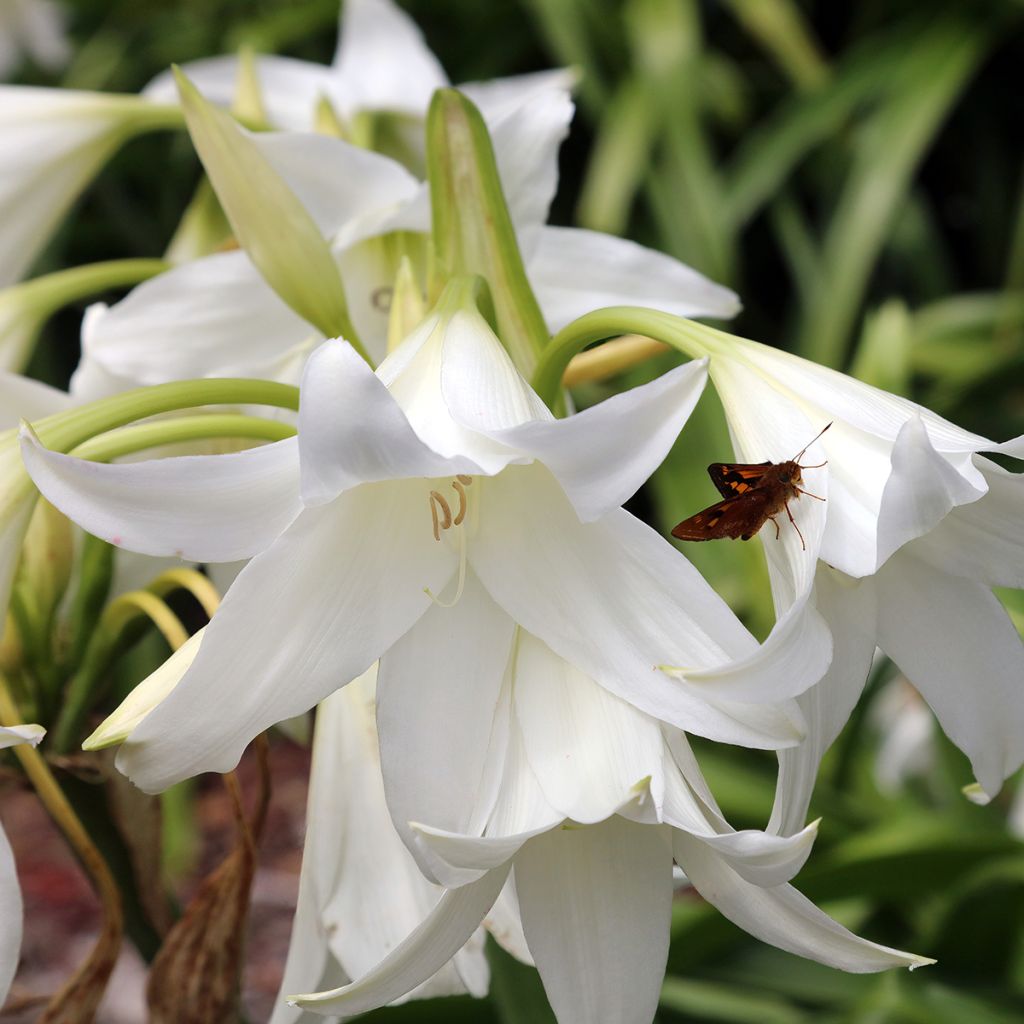

Amaryllis belladonna Alba
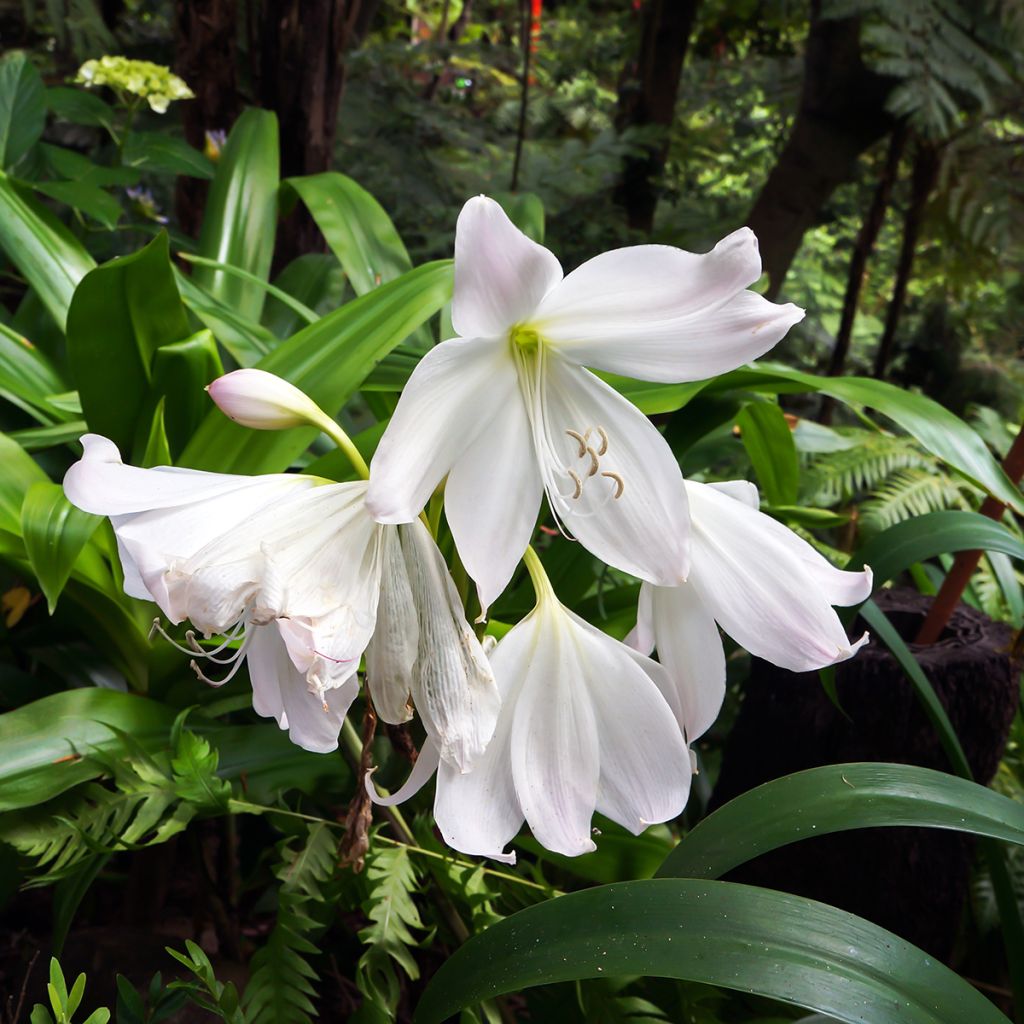

Amaryllis belladonna Alba
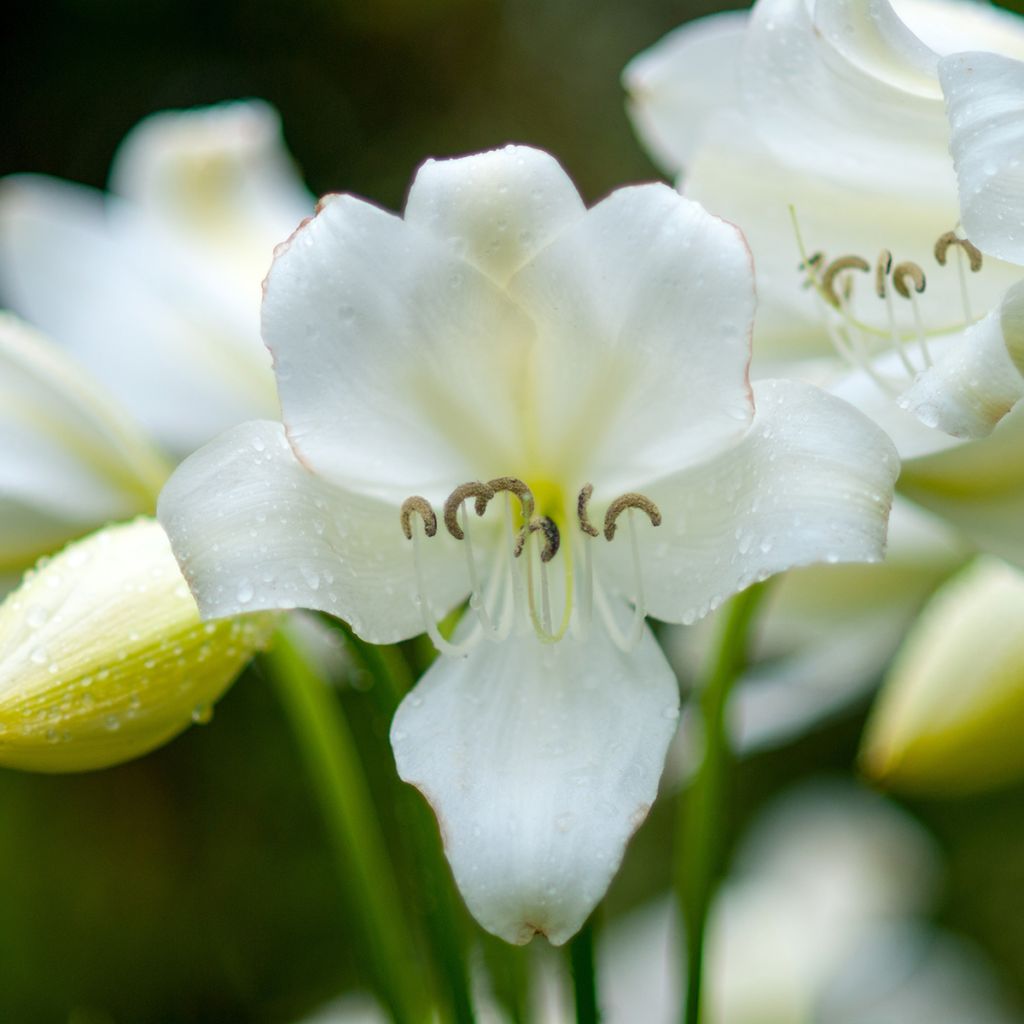

Amaryllis belladonna Alba
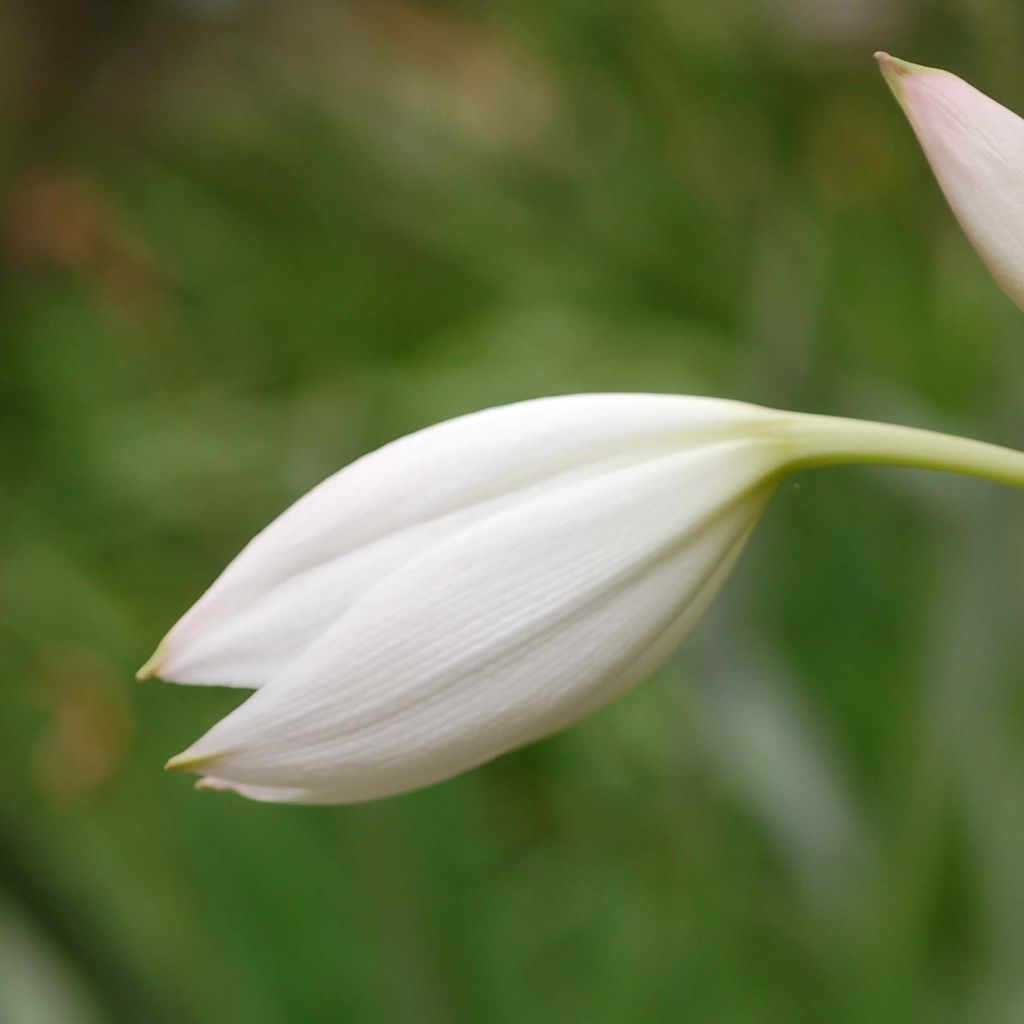

Amaryllis belladonna Alba
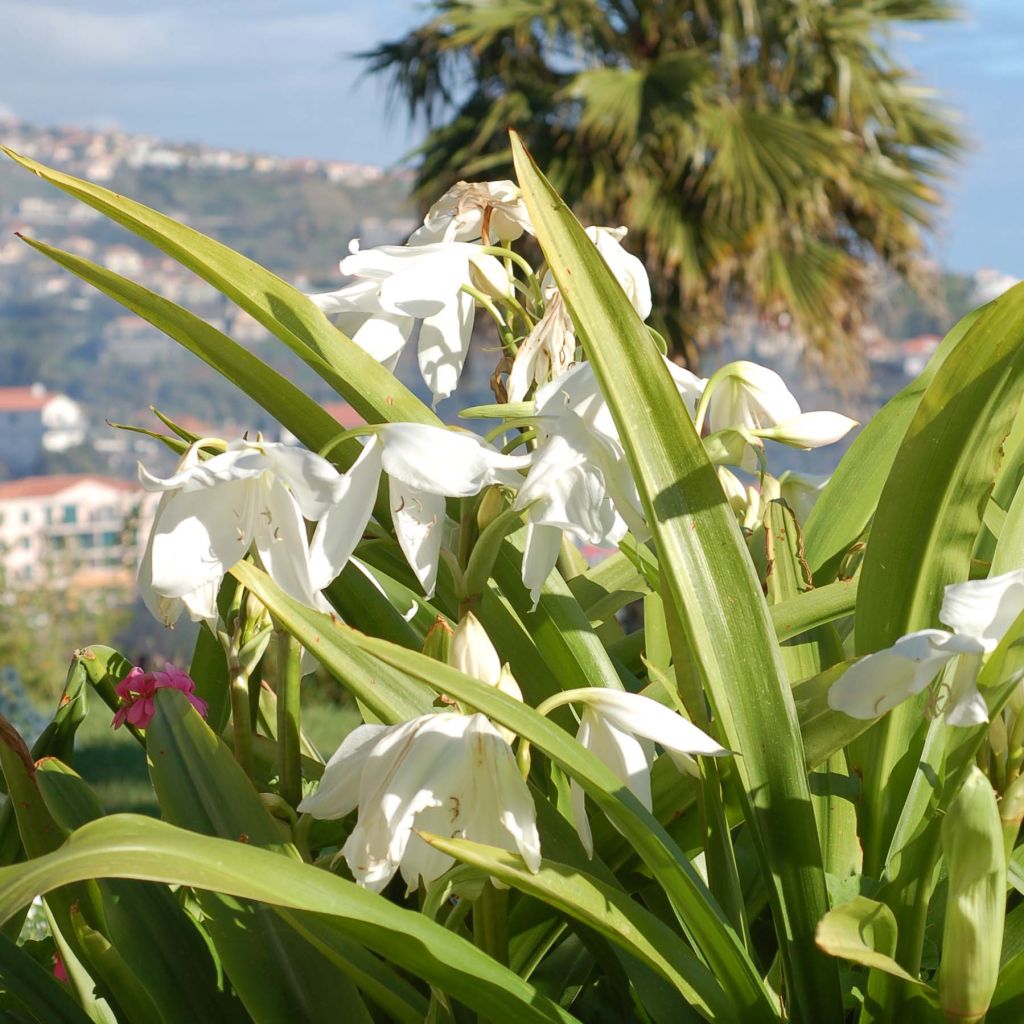

Amaryllis belladonna Alba
Amaryllis belladonna Alba
Amaryllis belladonna Alba
Belladonna lily, Jersey lily, Naked lady, March lily
This item cannot be shipped to the selected country
Delivery charge from €5.90
More information
Schedule delivery date,
and select date in basket
This plant carries a 6 months recovery warranty
More information
We guarantee the quality of our plants for a full growing cycle, and will replace at our expense any plant that fails to recover under normal climatic and planting conditions.
From €5.90 for pickup delivery and €6.90 for home delivery
Express home delivery from €8.90.
Does this plant fit my garden?
Set up your Plantfit profile →
Description
The Amaryllis belladonna Alba is a white form of the Belladonna Lily that is quite rare in cultivation and much less common in nature than the pink form. This bulbous plant, native to the South African plains, is well adapted to Mediterranean gardens where it finds its preferred climate. Its white and fragrant flowers, resembling lilies, appear in late summer on sturdy stems. The ribbon-like foliage, reminiscent of agapanthus leaves, emerges in autumn and disappears in late spring, before the arrival of summer drought. In the garden, this amaryllis is planted in borders or sunny beds. In very cold or very wet regions in summer, cultivation in pots is essential.
The Amaryllis Belladonna, also known as Brunsvigia rosea or Belladonna Lily, is native to the meadows of the Cape region in South Africa. This is a region where summers are dry and winters are mild and rainy. It belongs to the Amaryllidaceae or Liliaceae family, depending on the classification. Depending on the sources and the soil moisture in winter, its bulb can withstand brief freezes of about -12°C (10.4°F). The only difference with 'Alba' is the white flowers. This plant has a large bottle-shaped brown bulb that serves as a storage organ during the summer rest period. Flowering occurs before the foliage appears, usually in late August. From the ground emerge cylindrical, dark flower stalks, measuring 60 to 70 cm (24 to 28in) in height. Each stalk bears 4 to 6, or even 8, fragrant flowers measuring 8 to 10 cm (3 to 4in) in diameter. They are composed of 6 thick, fleshy tepals. Their colour is pure white to ivory white, with a yellow heart, releasing a bouquet of long golden-yellow stamens. Positioned back to back and tightly packed together, they form a unique composition. In late September to October, the foliage emerges from the ground. It forms a clump about 30-40 cm (12-16in) in all directions, composed of long, narrow, gracefully trailing, glossy green leaves. The leaves of amaryllis dry up and disappear when the plant goes into its rest period, between May and June. At this time of year, dry soil is beneficial for the bulb's health and its flowering the following year. Over time, the bulb produces small bulbils, allowing the plant to form colonies. All parts of the amaryllis are toxic if ingested.
The Amaryllis belladonna Alba does not need companions to display its obvious beauty. It can be planted among small bushes or perennials that will hide its absence in summer: dwarf asters, bloody cranesbills, and cotton lavenders can also dress up its slightly stiff stems at the end of summer. Preferably expose it to the sun, not too far from the house to fully enjoy its beauty and subtle fragrance. The Belladonna Lily thrives only in the ground in regions with mild winters and dry to very dry summers. Elsewhere, it should be kept in a nice pot to protect it from excessive humidity in summer, as well as from severe frost in winter.
Did you know: The Amaryllis Belladonna should not be confused with Hippeastrums, which are also called Amaryllis due to a language misuse directly related to an error made in the 18th century. It was Linnaeus himself who used it to name the American species. However, the name was already used for the South African species. Conventionally, the name Amaryllis was retained for both. To distinguish them, the mention Hippeastrum was added to the first, and Belladonna to the second. It must be said that both deserve this name: Amaryllis means "sparkling" and, in classical Greek literature, the plant was the subject of a pastoral poem where the beautiful shepherdess Amaryllis dies of unrequited love, which will only be granted to her after a terrible wound. From her blood will emerge splendid bunches of red flowers. Since then, the term has become synonymous with lofty beauty.
Report an error about the product description
Amaryllis belladonna Alba in pictures


Plant habit
Flowering
Foliage
Safety measures
Botanical data
Amaryllis
belladonna
Alba
Amaryllidaceae
Belladonna lily, Jersey lily, Naked lady, March lily
Brunsvigia rosea
South Africa
ingestion
Cette plante est toxique si elle est ingérée volontairement ou involontairement.
Ne la plantez pas là où de jeunes enfants peuvent évoluer, et lavez-vous les mains après l'avoir manipulée.
Pensez à conserver l'étiquette de la plante, à la photographier ou à noter son nom, afin de faciliter le travail des professionnels de santé.
Davantage d'informations sur https://plantes-risque.info
Other Amaryllis and Crinums
Planting and care
Growing in open ground is possible in regions where winter is not too harsh and summer is rather dry to very dry. Summer humidity is not favorable to the bulb, which can rot during its resting period. Similarly, summer drought induces flowering in the following season. Amaryllis belladonna should be planted in a very hot exposure, in soft, light, well-drained soil. It tolerates limestone, but will appreciate a generous addition of compost. Plant them at a depth of 15 to 20 cm (6 to 8in), spaced 25 to 30 cm (10 to 12in) apart. It will need a sheltered location and protection from frost with mulch or a layer of dry leaves. Well protected, the bulb can withstand very short frosts of around -10 to -12 °C (14 to 10.4°F).
The bulb is preferably planted during the resting period, between July and August. Potted belladonna lilies can be planted in spring or autumn.
Planting period
Intended location
Care
This item has not been reviewed yet - be the first to leave a review about it.
Bulbs to grow in pots
Haven't found what you were looking for?
Hardiness is the lowest winter temperature a plant can endure without suffering serious damage or even dying. However, hardiness is affected by location (a sheltered area, such as a patio), protection (winter cover) and soil type (hardiness is improved by well-drained soil).

Photo Sharing Terms & Conditions
In order to encourage gardeners to interact and share their experiences, Promesse de fleurs offers various media enabling content to be uploaded onto its Site - in particular via the ‘Photo sharing’ module.
The User agrees to refrain from:
- Posting any content that is illegal, prejudicial, insulting, racist, inciteful to hatred, revisionist, contrary to public decency, that infringes on privacy or on the privacy rights of third parties, in particular the publicity rights of persons and goods, intellectual property rights, or the right to privacy.
- Submitting content on behalf of a third party;
- Impersonate the identity of a third party and/or publish any personal information about a third party;
In general, the User undertakes to refrain from any unethical behaviour.
All Content (in particular text, comments, files, images, photos, videos, creative works, etc.), which may be subject to property or intellectual property rights, image or other private rights, shall remain the property of the User, subject to the limited rights granted by the terms of the licence granted by Promesse de fleurs as stated below. Users are at liberty to publish or not to publish such Content on the Site, notably via the ‘Photo Sharing’ facility, and accept that this Content shall be made public and freely accessible, notably on the Internet.
Users further acknowledge, undertake to have ,and guarantee that they hold all necessary rights and permissions to publish such material on the Site, in particular with regard to the legislation in force pertaining to any privacy, property, intellectual property, image, or contractual rights, or rights of any other nature. By publishing such Content on the Site, Users acknowledge accepting full liability as publishers of the Content within the meaning of the law, and grant Promesse de fleurs, free of charge, an inclusive, worldwide licence for the said Content for the entire duration of its publication, including all reproduction, representation, up/downloading, displaying, performing, transmission, and storage rights.
Users also grant permission for their name to be linked to the Content and accept that this link may not always be made available.
By engaging in posting material, Users consent to their Content becoming automatically accessible on the Internet, in particular on other sites and/or blogs and/or web pages of the Promesse de fleurs site, including in particular social pages and the Promesse de fleurs catalogue.
Users may secure the removal of entrusted content free of charge by issuing a simple request via our contact form.
The flowering period indicated on our website applies to countries and regions located in USDA zone 8 (France, the United Kingdom, Ireland, the Netherlands, etc.)
It will vary according to where you live:
- In zones 9 to 10 (Italy, Spain, Greece, etc.), flowering will occur about 2 to 4 weeks earlier.
- In zones 6 to 7 (Germany, Poland, Slovenia, and lower mountainous regions), flowering will be delayed by 2 to 3 weeks.
- In zone 5 (Central Europe, Scandinavia), blooming will be delayed by 3 to 5 weeks.
In temperate climates, pruning of spring-flowering shrubs (forsythia, spireas, etc.) should be done just after flowering.
Pruning of summer-flowering shrubs (Indian Lilac, Perovskia, etc.) can be done in winter or spring.
In cold regions as well as with frost-sensitive plants, avoid pruning too early when severe frosts may still occur.
The planting period indicated on our website applies to countries and regions located in USDA zone 8 (France, United Kingdom, Ireland, Netherlands).
It will vary according to where you live:
- In Mediterranean zones (Marseille, Madrid, Milan, etc.), autumn and winter are the best planting periods.
- In continental zones (Strasbourg, Munich, Vienna, etc.), delay planting by 2 to 3 weeks in spring and bring it forward by 2 to 4 weeks in autumn.
- In mountainous regions (the Alps, Pyrenees, Carpathians, etc.), it is best to plant in late spring (May-June) or late summer (August-September).
The harvesting period indicated on our website applies to countries and regions in USDA zone 8 (France, England, Ireland, the Netherlands).
In colder areas (Scandinavia, Poland, Austria...) fruit and vegetable harvests are likely to be delayed by 3-4 weeks.
In warmer areas (Italy, Spain, Greece, etc.), harvesting will probably take place earlier, depending on weather conditions.
The sowing periods indicated on our website apply to countries and regions within USDA Zone 8 (France, UK, Ireland, Netherlands).
In colder areas (Scandinavia, Poland, Austria...), delay any outdoor sowing by 3-4 weeks, or sow under glass.
In warmer climes (Italy, Spain, Greece, etc.), bring outdoor sowing forward by a few weeks.

































